If you struggle to get up out of a chair without grunting or find picking up something from the floor more challenging than you once did, then you’re not alone. Personal trainer and midlife coach James Davis says, "As we age, we naturally lose muscle mass and our tendons and ligaments lose elasticity, which means our mobility suffers unless we do something about it. Building strength in our knees and other vital parts of the body help protect yourself from falls and to keep moving well."
How to improve mobility
You can improve your mobility with some simple and gentle mobility exercises and James has designed this plan with the beginner in mind. He says, "Each week has two exercises, try and do these three times during the week. As you go through the weeks aim to complete three to four of the exercises in each of your sessions – so the two new ones, plus one or two that you’ve already tried."
Alongside the two weekly exercises, James has set easy and fun challenges that you can incorporate into your week to further improve your movement. After just four weeks, you should notice that you feel stronger, regain flexibility and able to move more easily.
Week one: Start simple
You’ll find quite a few of the exercises are seated and James Davis advises, "For all the chair exercises, a hard chair is better than a soft one that you’ll sink into." Alongside these two exercises for week one, James’s weekly challenge is to build at least 15 minutes of continuous walking into each day.
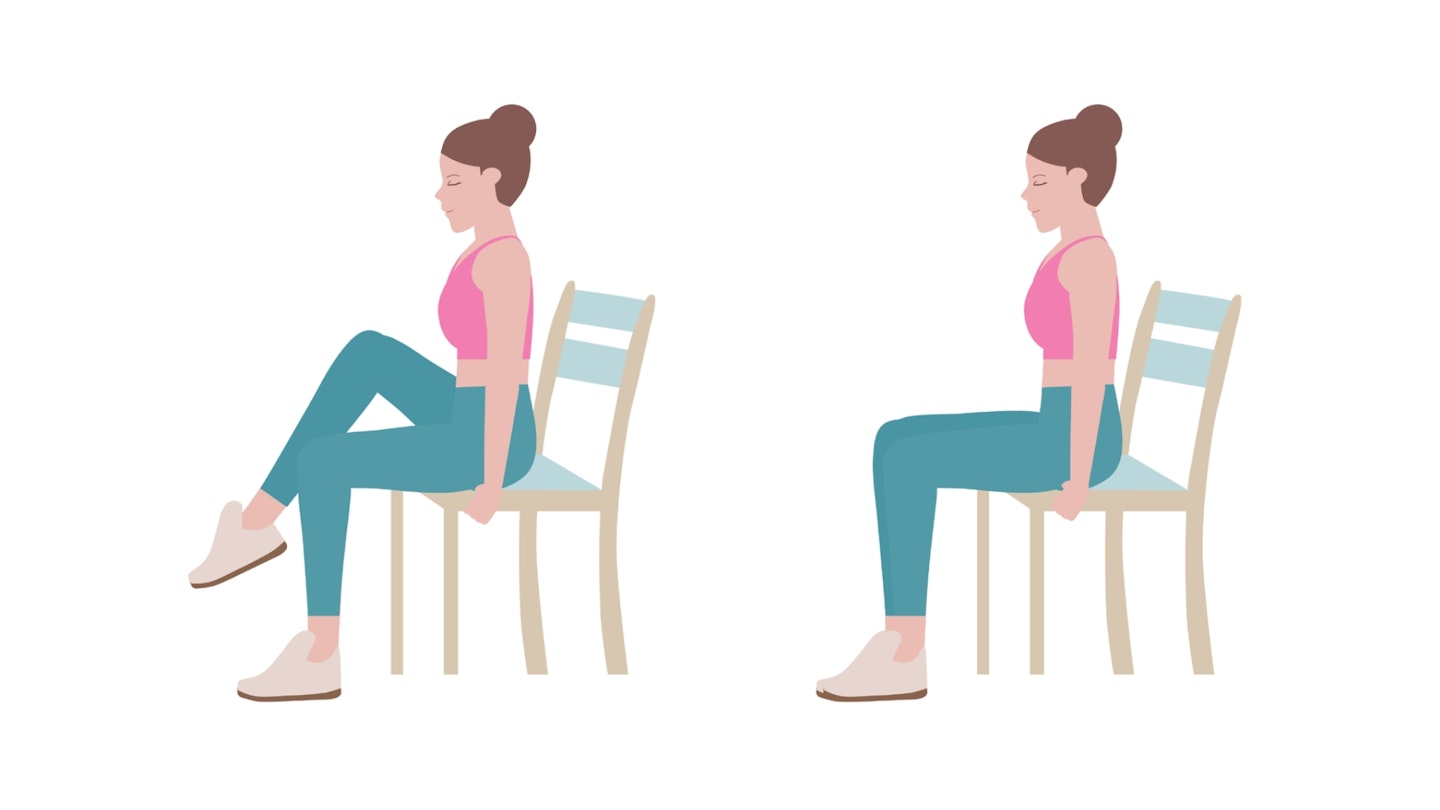
For the first exercise, James says, "Sit tall, ensuring your feet are flat on the floor and your back is straight. Start by slowly lifting one knee up toward your chest, then gently lowering it back down. Alternate between your left and right leg, as if marching on the spot. Aim for 10-15 repetitions (reps) per leg. This movement helps improve coordination, increases blood flow to the lower body, and strengthens the hip flexors, quads and core muscles. It also engages your abs for stability, which can improve your posture and support everyday activities such as walking and climbing stairs."
Week one: Strengthen your calves
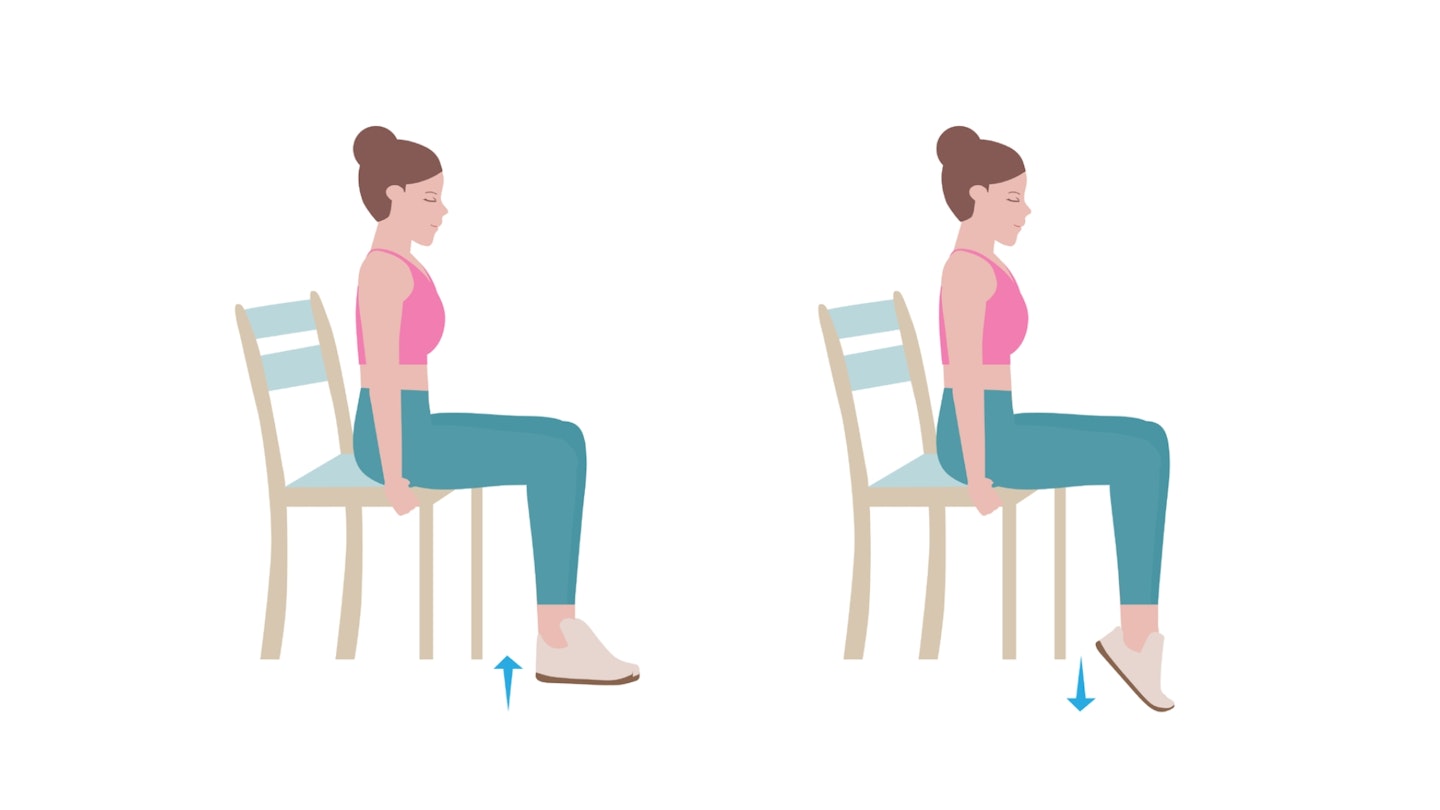
For the second exercise of the week, James Davis advises, "Again, sit on a chair with your feet flat on the floor, keeping your back straight. Start by raising your heels off the ground, keeping the balls of your feet planted. Lower your heels back to the floor, then raise your toes off the ground while keeping your heels planted. Repeat these movements for 10-15 reps each. This exercise strengthens the calf muscles, improves ankle mobility, and helps improve balance which will give you better stability when walking."
Week two: Try a seated leg extension
This week focuses on strength and stability. You should also incorporate your weekly challenge if you can, which is to take a flight of stairs, up and down, at least twice a day.
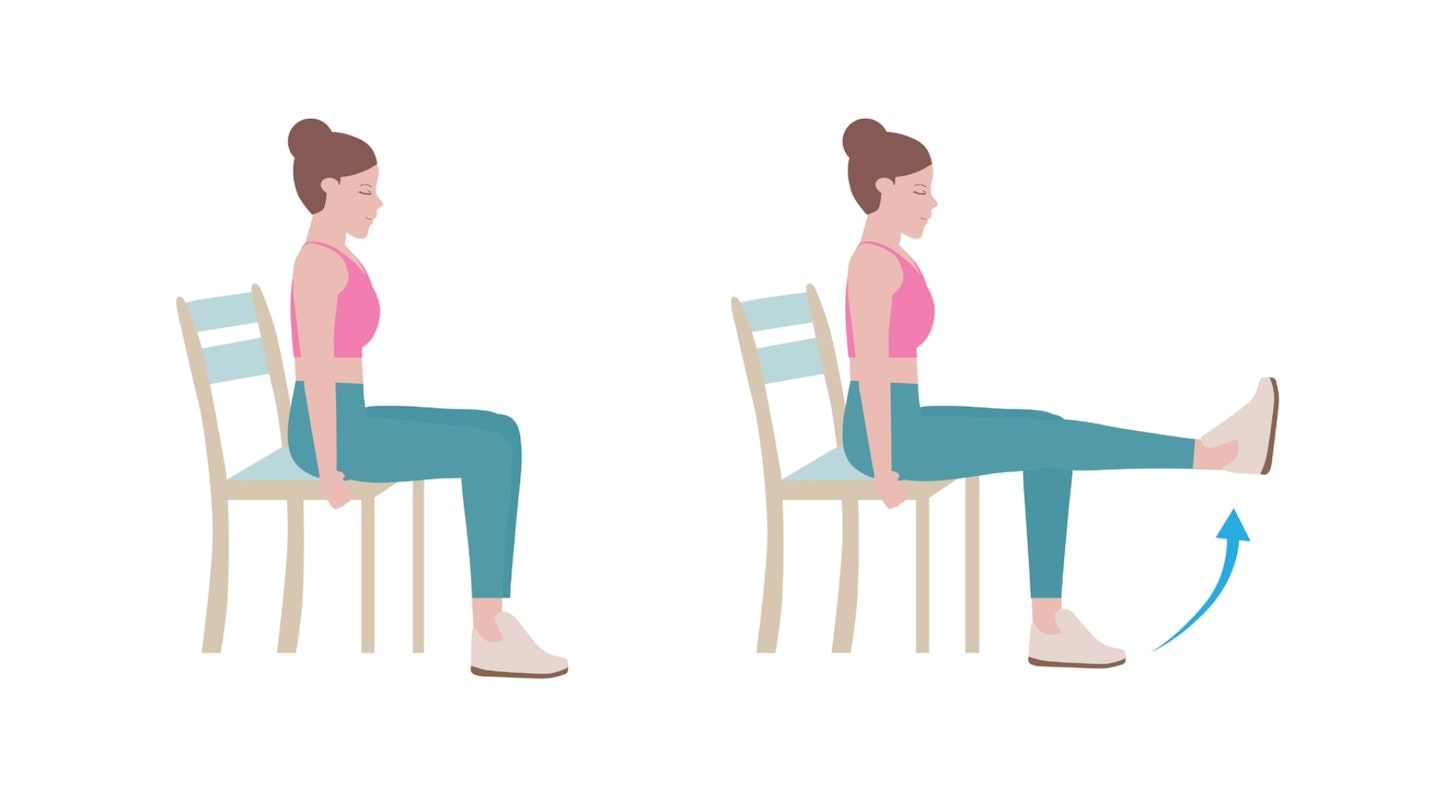
To start the first exercise, James says, "You’re going to sit on a chair with your back straight and your feet flat on the floor. Slowly extend one leg out in front of you, keeping your knee straight. Hold for a moment at the top, then slowly lower the leg back down. Repeat with the opposite leg. Aim for 10-12 reps per leg. This simple movement strengthens the quads, which are crucial for standing up, walking and maintaining balance. It also works your hip flexors, which can often weaken as we age. This exercise will help you get stronger in the legs, making it easier to rise from a chair and move around."
Week two: Improve upper body strength
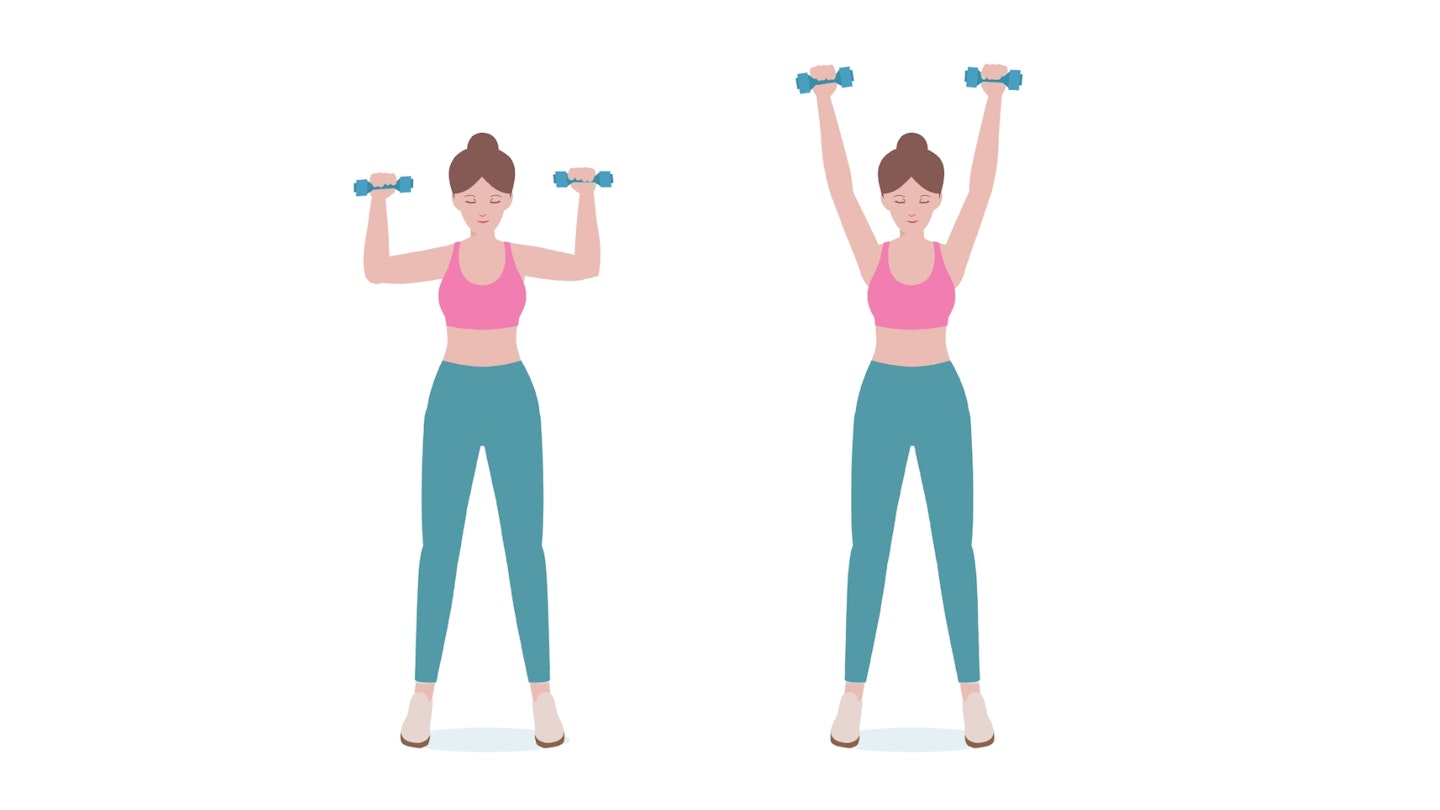
For the second exercise of the week, James says, "You can do this standing or seated, but sitting in a chair will support your lower back. You’re going to take a light dumbbell, bottle of water, or tin can in each hand. Start with your elbows bent at 90º and out to your side, hands at shoulder height, palms facing forward. Slowly press the weights upward until your arms are fully extended above you. Pause for a moment, then lower the weights back down to the starting position. Repeat for 8-10 reps. As you get stronger you can rest then add another set. This exercise strengthens the shoulders, arms, and upper chest muscles, which are important for reaching, lifting and general upper body strength."
Week three: Achieve better balance
Week three focuses on improving your flexibility which is crucial for movement. Alongside these two exercises, James sets a weekly challenge to improve your core mobility. Stand with your feet shoulder width apart, holding your arms up to shoulder height and gently rotating left and right from the waist nice and slowly, taking it as far as is comfortable.
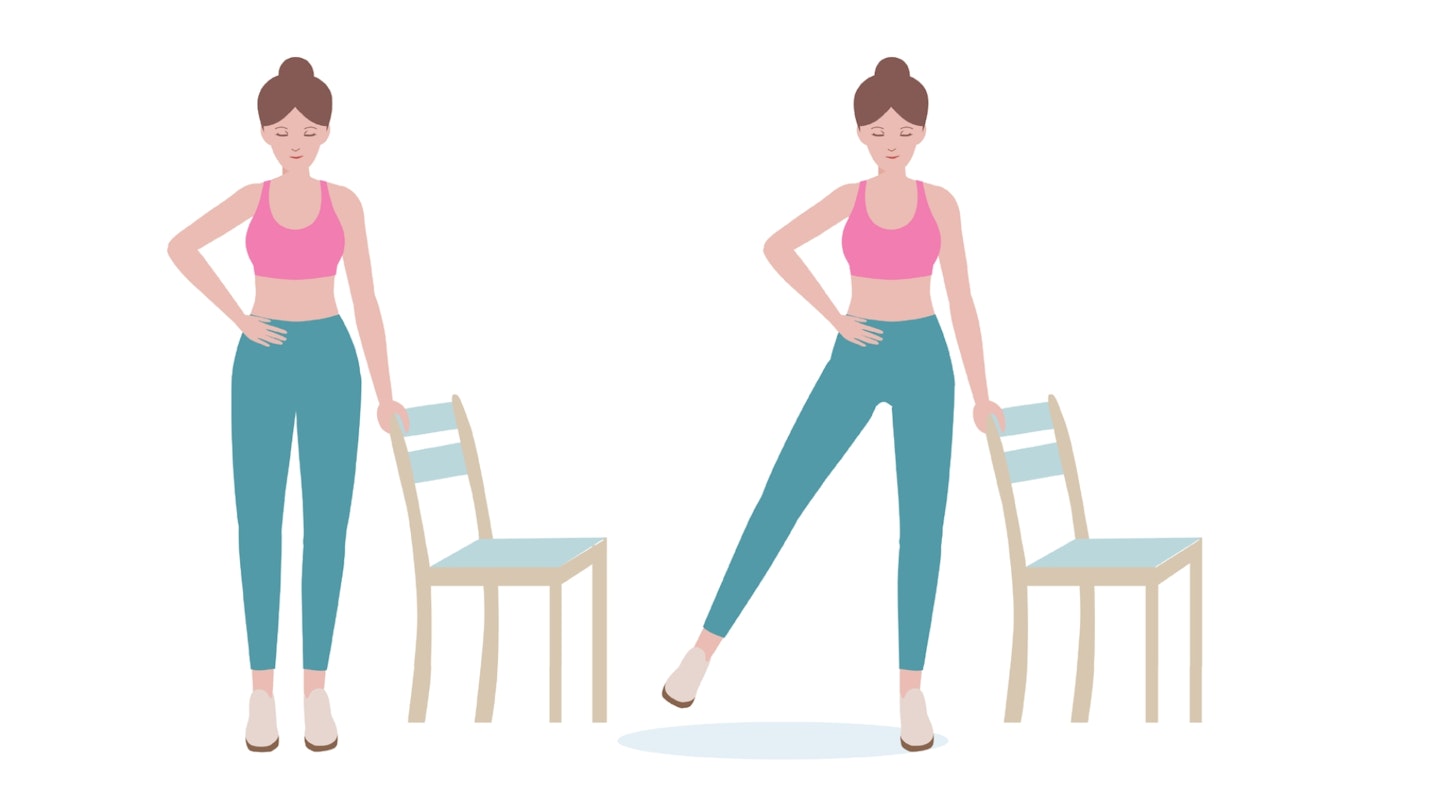
For exercise number one, James says, "For this one you’re going to practise taking your legs out to the side from the hip. Stand tall with your feet hip-width apart, holding onto the back of a chair or a sturdy surface for balance. Slowly lift one leg to the side, as high as you comfortably can and with control. Hold for a few seconds at the top, then gently lower the leg back down. Repeat for 10-12 reps per leg. This exercise targets the outer hip and thigh muscles, which are essential for balance and stability. As you get stronger, you can increase the number of repetitions or add ankle weights for added resistance, further building strength in the lower body."
Week three: Boost circulation

For the second exercise, James says, "Sit in a chair with your feet flat on the floor, keeping your back straight. Lift one foot off the floor and rotate your ankle in small circles. Do 10 seconds clockwise, then switch to 10 seconds counterclockwise. Repeat with the other foot. This simple movement helps to improve circulation in the ankles, improves flexibility, and can help prevent stiffness. Ankle mobility is crucial for walking and maintaining balance, and this exercise promotes blood flow, especially for those with less mobility."
Week four: Strengthen legs with gentle squats
Week four focuses on strengthening again. Alongside these two exercises, James recommends completing the weekly challenge, which is carrying light bags of shopping in both hands as far as you can once a day. Make it more challenging by aiming to take longer strides than normal.
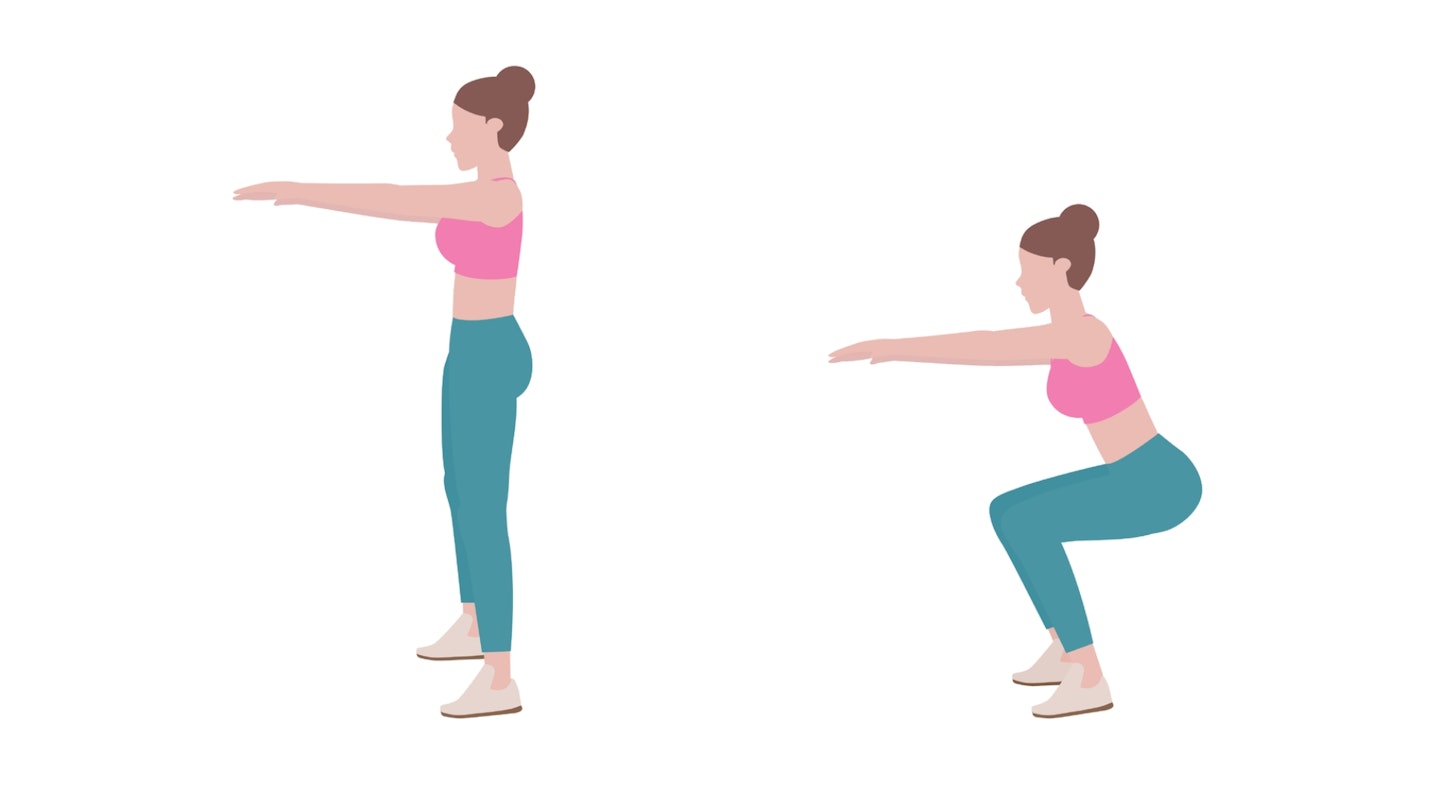
For your first exercise, James says, "Stand up tall placing your feet shoulder-width apart. Bracing your core, move into a squat ensuring your knees don’t travel forward over your toes. Go as low as you’re confident going, pause for a moment at the bottom of the movement, then gently return to upright without locking out the knees. If you need to, you can do this next to a wall to help with balance and support. Aim for 10 repetitions in one go, then over time add another 10 with rest in between each set. This exercise strengthens the muscles in your legs, particularly the quads and glutes, which are key to standing up without assistance."
Week four: Build your arms with wall press-ups
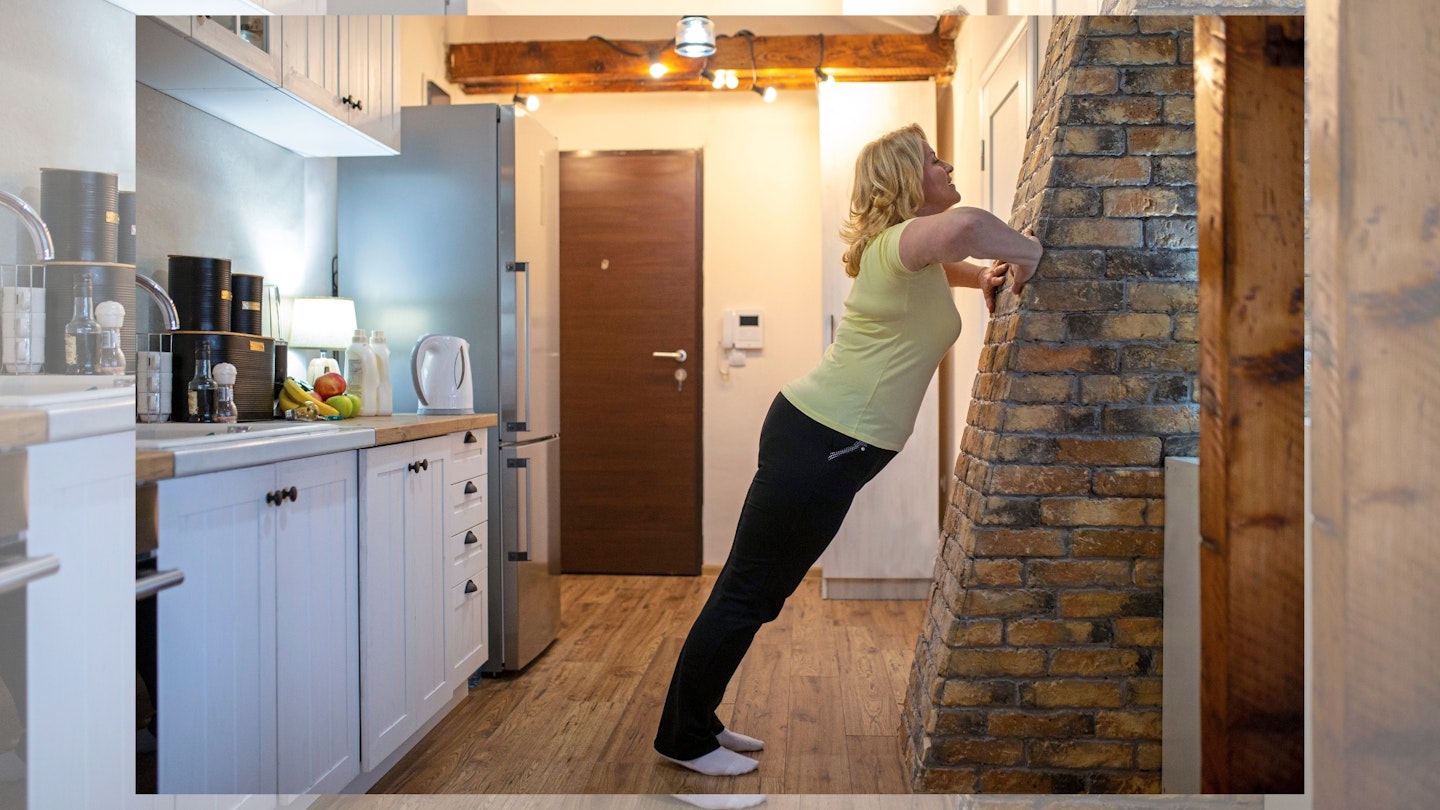
For the second exercise, James says, "Stand facing a wall, about an arm’s length away. Place your hands on the wall at shoulder height and width. Bend your elbows slowly, bringing your chest toward the wall, then press back up to the starting position. Keep your body straight throughout the movement. Start with 10-12 reps. Over time build up to two sets with a rest in between. This move is a good upper-body exercise as we age because it’s gentle on the joints while strengthening the chest, arms and shoulders. Increase the angle as you get stronger, or progress to a lower surface for more intensity. This exercise will help improve upper body strength for daily activities like lifting objects, reaching, or pushing."
Meet the expert
James Davis is a personal trainer, hormone specialist, psychologist and coach. He co-founded The Midlife Mentors offering coaching and evidence-based science to help clients reclaim their body, mind and life.
Annabelle Leeis a Lifestyle Editor at Bauer Media. She specialises in health, wellness and lifestyle celebrity content. She studied Journalism at The University of Sheffield and started her magazine career at Cosmopolitan in 2010. She has since worked across a wide range of women’s interest magazines and remains passionate about writing and long form features. Her favourite part of the job is that she gets to constantly learn new things, interview fascinating experts and share their advice with readers.
